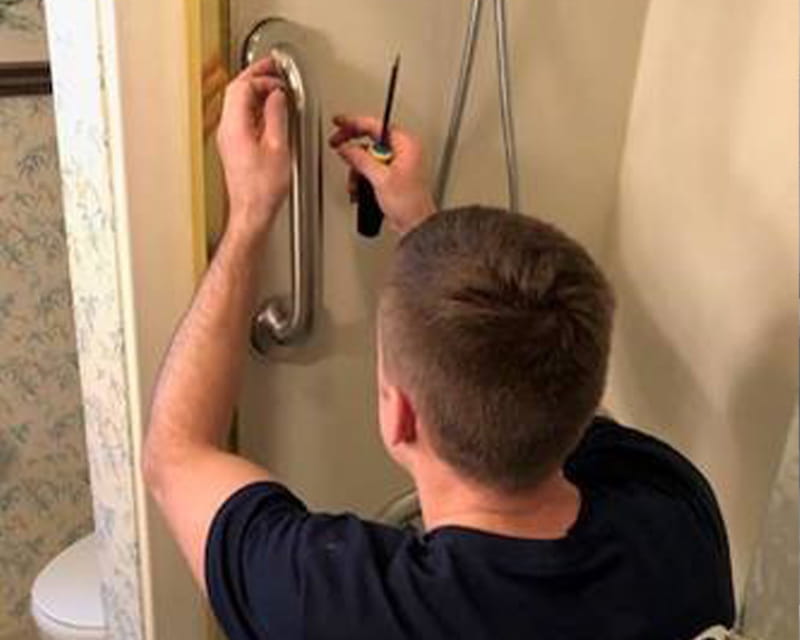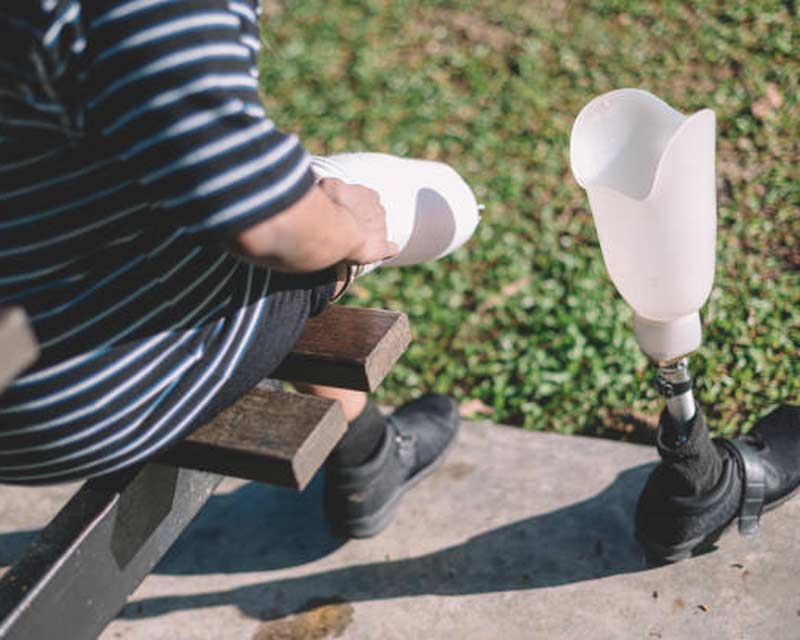
improving patient care
 Team of orthopedic trauma and plastic surgery experts expands use of orthoplastics to bring specialized TMR procedure to more patients
Team of orthopedic trauma and plastic surgery experts expands use of orthoplastics to bring specialized TMR procedure to more patientsAn Orthoplastics Collaborative at The Ohio State University Wexner Medical Center creates a true co-management service between orthopedic trauma and plastic surgery colleagues that optimizes outcomes for patients undergoing limb reconstruction.
“We are really purposeful in working in parallel from the time of injury,” says Laura Phieffer, MD, chief of the Division of Orthopaedic Trauma for the Department of Orthopedic Surgery at the Ohio State Wexner Medical Center. “We review cases daily, and we hold a weekly indications conference.”
Previous orthoplastic approaches meant orthopedic trauma surgeons completed their work in the operating room first, followed by plastic surgeons. Now experts from both subspecialities outline surgical plans in advance. And that, Phieffer says, is a differentiator for Ohio State.
The collaborative helped bring a new procedure called TMR, or targeted muscle reinnervation, to the forefront. TMR helps patients with traumatic amputation by achieving better outcomes, reduced pain, improved satisfaction and decreased phantom limb symptoms.
This partnership between orthopedics and plastic surgery is redefining orthoplastics into a practice that provides more comprehensive and efficient care with fewer complications. It is also opening doors for research opportunities and a new fellowship in orthoplastics.
TMR is an example of a surgical technique born out of nerve transfers in the intact limb. It is used effectively in the amputation setting to optimize function and minimize pain, Phieffer says.
The procedure was developed for amputees. It was first used in upper extremities so patients could fire muscles and operate a mechanical extension of a limb. For example, TMR would allow a patient to fire the bicep and it would open a mechanical hand that provided functionality.
Plastic surgeons discovered TMR also helped reduce phantom limb pain, and they translated it for use in the lower extremities.
“It really has allowed us to dramatically reduce the pain experience,” Phieffer says.
Now the orthoplastics team is working to outline the patient population that can benefit most from the TMR procedure and the right timing for applying the technique.
Questions the team is trying to answer include:
Some patients don’t experience phantom limb pain, which is why the team is studying early intervention versus waiting a few weeks.
“We are trying to get to that next level of understanding for this technique,” Phieffer says. “It’s been an absolute game-changer for clinical care.”
Historically, the orthopedic trauma and plastics service lines have worked well together. Today, Ohio State’s team includes orthopedic trauma and plastic surgeons such as Jason Souza, MD, director of the Advanced Amputation Program and the Orthoplastic Reconstruction Program at the Ohio State Wexner Medical Center, and associate professor in plastic and orthopedic surgery.
Together, the orthoplastic surgeons apply the principles and practices of both specialties simultaneously to patients with severe injuries to the extremities or patients with oncologic processes. They also share the belief that daily meetings and patient conferences improve care outcomes.
“For a true orthoplastic service to work, we must recruit plastic surgeons who can function in the same way as orthopedic trauma surgeons,” Phieffer says. “We set up a structure to recruit a surgeon who believed in this dual approach.”
Now at Ohio State, the orthoplastics team is together every morning, discussing the patients who need this approach. The team also shares the operating room time together and learns from one another.
“We are thinking about it collectively and improving each other’s knowledge from the training we bring in,” Phieffer says.
This combined deep commitment will take the orthoplastics approach to the next level, Phieffer says, achieving decreased operating room interventions and reduced complications.
Patients benefit from:
These outcomes are all critically important in a health care climate of bundled payments and outcomes-based reimbursement, Phieffer says.
The team also exposes resident doctors from both orthopedic trauma and plastic surgery to the orthoplastic concept through open discussions so that they can learn.
“We have to get creative in this space,” Phieffer says. “No two fractures of this complicated nature are truly the same.”
The orthoplastics partnership ensures comprehensive care because the team discusses at length the best way to move patients through surgical care. The collaborative has the means to treat the entire extremity (bone, soft tissue, tendon, nerve) using the full range of techniques and technologies.
The fixation strategy is determined by the needs of the fracture — not the limitations of the existing soft tissue envelope, Phieffer says.
In the past, or at centers without soft tissue expertise, how a fracture is repaired would change depending on the right soft tissue closure or blood supply.
By working collaboratively, the orthoplastics team finds the most ideal way to fix a fracture. Orthopedic trauma surgeons detail options from the bone perspective and list concerns about soft tissue and blood supply. Plastic surgeons support the fixation plan with a soft tissue reconstruction that is needs based.
This proactive approach leads to more efficient care delivery by providing timely advanced soft tissue coverage that enables more effective debridement and fewer trips to the operating room for sequential debridement or secondary infection.
At Ohio State, orthoplastics is employed uniformly across limb salvage and amputation with the goal of optimizing function and minimizing pain. The approach allows sophisticated techniques and technologies — like TMR — that have largely been utilized only for limb salvage to be applied to amputation surgery.
Ohio State’s Orthoplastics Collaborative plans to grow its reach in conditions treated, education, location and research. The team is actively recruiting another surgeon with plastic and microvascular reconstruction expertise, as well as another orthopedic trauma surgeon.
With a current focus on trauma, the Orthoplastics Collaborative wants to expand its services to assist patients dealing with infections, Phieffer says, as well as its geographic reach.
“We want to grow our volumes and provide services at places like Ohio State East Hospital for all patients managing orthopedic infection, trauma and related conditions,” Phieffer says.
Souza’s military background and experience working at Walter Reed National Military Medical Center provide the opportunity to care for wounded warriors from across the country and participate in research with the Department of Defense. He also works within Ohio State’s Military Medicine Program.
Continued research projects also provide an avenue for Ohio State to build its reputation in orthoplastics.
As the program adds more faculty, plans call for adding a fellowship in Orthoplastics.
“What we are doing is looking at how we can better combine residencies so that the doctors get that cross training, and as we expand, we will add a fellowship,” Phieffer says.